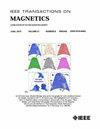使用TMR传感器进行生物磁传感的电子接口设计考虑
IF 1.9
3区 工程技术
Q3 ENGINEERING, ELECTRICAL & ELECTRONIC
引用次数: 0
摘要
我们提出了一种隧道磁电阻(TMR)传感器的电子接口的综合设计方法,它在确定生物磁测量系统的探测性方面起着至关重要的作用。建立了一个理论噪声模型,将传感器的探测性与关键设计参数(如惠斯通电桥配置、传感器偏置和模拟前端(AFE)噪声性能)联系起来。该模型基于TMR传感器的详细特性,准确预测了偏置电压和电阻失配对电源抑制比(PSRR)的影响。结果表明,在5~\mu $ t的背景磁场下,全惠斯顿电桥结构具有优异的探测性,PSRR可以从接近无限大的值下降到约28 dB。在此模型的指导下,对传感器系统进行了电桥结构、偏置条件和AFE设计的优化。实验验证证实,在接近零和$5~ $ μ $ T磁场下,在1 Hz时的探测率为7.4 pT/ $ $ $ $ Hz,在5 - 100 Hz波段内的综合rms噪声为20 pT。这些结果超过了先前报道的在类似频段和类似工作条件下工作的基于tmr的传感器系统。研究结果强调了TMR传感器电子接口设计系统和集成方法的重要性,它支持开发能够在没有广泛磁屏蔽的情况下运行的生物磁传感系统。本文章由计算机程序翻译,如有差异,请以英文原文为准。
Electronic Interface Design Considerations for Biomagnetic Sensing Using TMR Sensors
We present a comprehensive design methodology for the electronic interface of a tunneling magnetoresistance (TMR) sensor, which plays a crucial role in determining the detectivity of biomagnetic measurement systems. A theoretical noise model is developed that links sensor detectivity to key design parameters such as the Wheatstone bridge configuration, sensor biasing, and analog front-end (AFE) noise performance. The model is based on a detailed characterization of the TMR sensor and accurately predicts the influence of bias voltage and resistance mismatches on the power supply rejection ratio (PSRR). It shows that the full Wheatstone bridge configuration achieves superior detectivity and that the PSRR can degrade from near-infinite values to approximately 28 dB under a background magnetic field of $5~\mu $ T. Guided by this model, the sensor system is optimized in terms of bridge configuration, bias conditions, and AFE design. Experimental validation confirms a detectivity of 7.4 pT/ $\surd $ Hz at 1 Hz and an integrated rms noise of 20 pT within the 5–100 Hz band, under both near-zero and $5~\mu $ T magnetic fields. These results surpass those of previously reported TMR-based sensor systems operating in similar frequency bands and under comparable working conditions. The findings highlight the importance of a systematic and integrated approach to electronic interface design for TMR sensors, which supports the development of biomagnetic sensing systems capable of operating without extensive magnetic shielding.
求助全文
通过发布文献求助,成功后即可免费获取论文全文。
去求助
来源期刊

IEEE Transactions on Magnetics
工程技术-工程:电子与电气
CiteScore
4.00
自引率
14.30%
发文量
565
审稿时长
4.1 months
期刊介绍:
Science and technology related to the basic physics and engineering of magnetism, magnetic materials, applied magnetics, magnetic devices, and magnetic data storage. The IEEE Transactions on Magnetics publishes scholarly articles of archival value as well as tutorial expositions and critical reviews of classical subjects and topics of current interest.
 求助内容:
求助内容: 应助结果提醒方式:
应助结果提醒方式:


